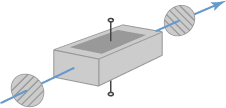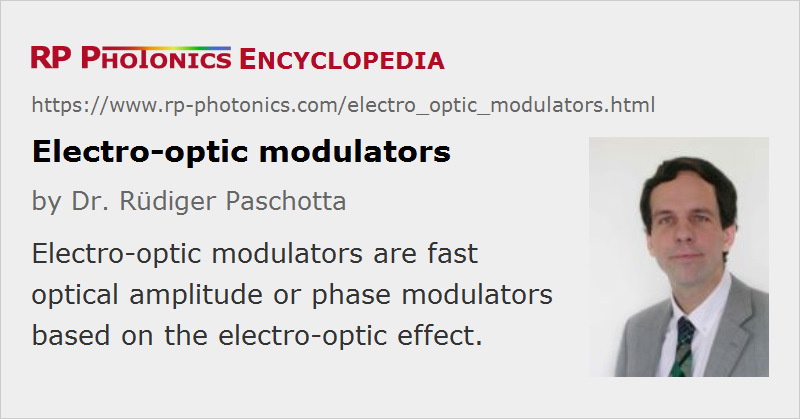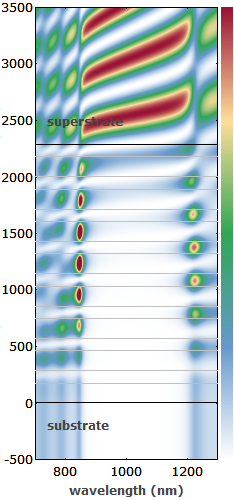Electro-optic Modulators
Acronym: EOM
Definition: optical modulators based on the electro-optic effect
Alternative term: Pockels cells
More general terms: optical modulators
German: elektrooptische Modulatoren
Categories: nonlinear optics, photonic devices
How to cite the article; suggest additional literature
Author: Dr. Rüdiger Paschotta
An electro-optic modulator (EOM) (or electrooptic modulator) is a device which can be used for controlling the power (→ intensity modulators), phase (→ phase modulators) or polarization of light with an electrical control signal. It typically contains one or two Pockels cells, and possibly additional optical elements such as polarizers. Different types of Pockels cells are shown in Figure 1 and are described more in detail in the article on Pockels cells. The principle of operation is based on the linear electro-optic effect (also called the Pockels effect), i.e., the modification of the refractive index of a nonlinear crystal by an electric field in proportion to the field strength.
Most EOMs are operated with free-space laser beams, but there are also fiber-coupled modulators, where the Pockels cell is placed between two fiber collimators. Such devices typically have an insertion loss around 4 dB and can handle only limited power levels, e.g. 50 mW.
Frequently used nonlinear crystal materials for EOMs are potassium di-deuterium phosphate (KD*P = DKDP), potassium titanyl phosphate (KTP), beta-barium borate (BBO) (the latter for higher average powers and/or higher switching frequencies), also lithium niobate (LiNbO3), lithium tantalate (LiTaO3) and ammonium dihydrogen phosphate (NH4H2PO4, ADP). In addition to these inorganic electro-optic materials, there are also special polymers for modulators.

The voltage required for inducing a phase change of π is called the half-wave voltage (Vπ). For a Pockels cell, it is usually hundreds or even thousands of volts, so that a high-voltage amplifier is required. Suitable electronic circuits can switch such large voltages within a few nanoseconds, allowing the use of EOMs as fast optical switches. In other cases, a modulation with smaller voltages is sufficient, e.g. when only a small amplitude or phase modulation is required.
Types of Electro-optic Modulators
Phase Modulators
The simplest type of electro-optic modulator is a phase modulator containing only a Pockels cell, where an electric field (applied to the crystal via electrodes) changes the phase delay of a laser beam sent through the crystal. The polarization of the input beam often has to be aligned with one of the optical axes of the crystal, so that the polarization state is not changed.
Many applications require only a small (periodic or nonperiodic) phase modulation. For example, this is often the case when one uses an EOM for monitoring and stabilizing a resonance frequency of an optical resonator. Resonant modulators (see below) are often used when a periodic modulation is sufficient, and make possible a large modulation depth with a moderate drive voltage. The modulation depth can in some cases be so high that dozens of sidebands are generated in the optical spectrum (comb generators, frequency combs).
Note that an electro-optic modulator is not suitable for frequency modulation, or precisely speaking only for limited short-term frequency changes. For example, it could not be used to generate a constant change of optical frequency of an optical signal, since that would imply a linearly increasing phase delay (without any limit to the phase excursion).
Polarization Modulators
Depending on the type and orientation of the nonlinear crystal, and on the direction of the applied electric field, the phase delay can depend on the polarization direction. A Pockels cell can thus be seen as a voltage-controlled waveplate, and it can be used for modulating the polarization state. For a linear input polarization (often oriented at 45° to the crystal axes), the output polarization will in general be elliptical, rather than simply a linear polarization state with a rotated direction.
Amplitude or Intensity Modulators
Combined with other optical elements, in particular with polarizers, Pockels cells can be used for other kinds of modulation. In particular, an amplitude modulator (Figure 2) is based on a Pockels cell for modifying the polarization state and a polarizer for subsequently converting this into a change in transmitted optical amplitude and power.

An alternative technical approach is to use an electro-optic phase modulator in one arm of a Mach–Zehnder interferometer in order to obtain amplitude modulation. This principle is often used in integrated optics (for photonic integrated circuits), where the required phase stability is much more easily achieved than with bulk optical elements.
Optical switches are modulators where the transmission is either switched on or off, rather than varied gradually. Such a switch can be used, e.g., as a pulse picker, selecting certain pulses from a train of ultrashort pulses, or in cavity-dumped lasers (with an EOM as cavity dumper) and regenerative amplifiers.
Temperature Drifts; Thermally Compensated Devices
In configurations where the induced relative phase change between two polarization directions is used, thermal influences can be disturbing. They result in a drift of the operation point, which may have to be compensated with an automatically adjusted bias voltage. Additional electronics may be used for such purposes, deriving the required bias voltage from some optical signals.
Some electro-optic modulators contain two matched Pockels cells in an athermal configuration where the temperature dependence of the relative phase shift is largely canceled. There are also configurations with four crystals of exactly the same length, canceling both birefringence effects and spatial walk-off. Various types of multi-crystal designs are used, depending on the material and the exact requirements.
Resonant Versus Broadband Devices
For some applications, a purely sinusoidal modulation with constant frequency is required. In that case, it is often beneficial to use an electrically (not mechanically) resonant electro-optic modulator, containing a resonant LC circuit. The input voltage of the device can then be substantially lower than the voltage across the electrodes of the Pockels cell. A high ratio of these voltages requires a high Q factor of the LC circuit and reduces the bandwidth in which strong resonant enhancement can be achieved. The disadvantage of using a resonant device is that one loses flexibility: changing the resonance frequency requires the exchange of at least one electric component.
Broadband modulators are optimized for operation in a wide frequency range, which typically starts at zero frequency. A high modulation bandwidth typically requires a Pockels cell with a small electric capacitance, and excludes the exploitation of a resonance.
Traveling-Wave Modulators
For particularly high modulation bandwidths e.g. in the gigahertz region, integrated optical traveling-wave modulators are often used. Here, the electric drive signal generates an electromagnetic wave (microwave) propagating along the electrodes in the direction of the optical beam. Ideally, the phase velocities of both waves are matched so that efficient modulation is possible even for frequencies which are so high that the electrode length corresponds to several wavelengths of the microwave.
Important Properties
A number of properties should be considered before purchasing an electro-optic modulator:
- The device must have a sufficiently large open aperture, particularly in cases with high peak powers. A high crystal quality and appropriate electrode geometry are required for uniform switching or modulation across the full open aperture. The price can significantly rise for increasing aperture sizes.
- For switching ultrashort pulses, effects of Kerr nonlinearity and chromatic dispersion may be relevant, which depend on the crystal material and length and also on the beam radius. (Significant effects of this kind often cannot be avoided and thus have to be taken into account in the design of, e.g., a regenerative amplifier.)
- Depending on the device design, the polarization of the incoming beam may or may not be maintained in the output.
- A phase modulator may generate unwanted amplitude modulation, and vice versa. This depends strongly on the design.
- As electro-optic materials are also piezo-electric, the applied voltage can introduce mechanical vibrations, which themselves can affect the refractive index via the elasto-optic effect. Around certain mechanical resonance frequencies, the modulator response may be strongly modified. This can be a problem particularly for broadband modulators. In switching applications, unwanted ringing effects can occur. Such effects depend strongly on the crystal material, dimensions, orientation and mechanical design.
- Both high optical average powers and high switching frequencies can induce thermal problems. The thermal handling and thus the power and frequency capabilities depend on various construction details.
- The crystal(s) should have high-quality anti-reflection coatings, designed for the required range of operation wavelengths, and of course a good material transparency, in order to minimize the insertion loss.
- Rejected optical beams may be absorbed within the modulator device, or (particularly for high-power devices) leave the device at a more or less convenient location and direction.
- The switching speed (rise time, fall time) depends on properties of both the modulator (e.g. via its capacitance) and the electronic driver.
- Electro-optic modulators can be purchased in fiber-coupled form, with different types of connectors and fibers (e.g. single-mode or multimode).
Note that a proper mechanical mount is also required, often with means to align the modulator precisely in various directions.
Electronic Driver
It is important to use an electronic driver which is both well matched to the EOM and suitable for the particular application. For example, different kinds of EOMs require different drive voltages, and the driver should also be designed for the given electrical capacitance of the EOM. Some drivers are suitable for a purely sinusoidal modulation, whereas broadband devices work in a large range of modulation frequencies. Many problems can be avoided by purchasing an electro-optic modulator together with the electronic driver from the same supplier, because the responsibility for the overall performance is then at one place.
Applications
Some typical applications of electro-optic modulators are:
- modulating the power of a laser beam, e.g. for laser printing, high-speed digital data recording, or high-speed optical communications
- in laser frequency stabilization schemes, e.g. with the Pound–Drever–Hall method
- Q switching of solid-state lasers (where the EOM serves to block the laser resonator before the pulse is to be emitted)
- active mode locking (where the EOM modulates the resonator losses or the optical phase with the round-trip frequency or a multiple thereof)
- switching pulses in pulse pickers, regenerative amplifiers and cavity-dumped lasers
Suppliers
The RP Photonics Buyer's Guide contains 42 suppliers for electro-optic modulators. Among them:

EKSMA OPTICS
We produce KTP, KD*P and BBO Pockels cells for applications like Q-switching of lasers, pulse picking, laser cavity dumping and coupling laser pulses into and from regenerative amplifiers. Our Pockels cells can be supplied with mounting stages, drivers, power supplies and electronics for pulse picking.


Kapteyn-Murnane Laboratories
The KMLabs Eclipse is a high repetition rate, half wave Pockels cell and driver unit, designed for laser pulse picking at up to 20 kHz. The Eclipse has a minimum window of 10 ns, and about a 90% throughput between 750 nm and 850 nm. KMLabs' compact design allows the driver to be packaged in with the optical unit, thus minimizing the high voltage cable length, and thereby maximizing the switching speed. The high voltage source for the Eclipse is an external, 19”w x 13”d x 3.5”h unit.
Questions and Comments from Users
Here you can submit questions and comments. As far as they get accepted by the author, they will appear above this paragraph together with the author’s answer. The author will decide on acceptance based on certain criteria. Essentially, the issue must be of sufficiently broad interest.
Please do not enter personal data here; we would otherwise delete it soon. (See also our privacy declaration.) If you wish to receive personal feedback or consultancy from the author, please contact him e.g. via e-mail.
By submitting the information, you give your consent to the potential publication of your inputs on our website according to our rules. (If you later retract your consent, we will delete those inputs.) As your inputs are first reviewed by the author, they may be published with some delay.
See also: electro-optic effect, electro-optics, Pockels effect, Pockels cells, Pockels cell drivers, pulse pickers, nonlinear crystal materials, optical modulators, intensity modulators, phase modulators, cavity dumping, regenerative amplifiers, active mode locking, electroabsorption modulators, acousto-optic modulators
and other articles in the categories nonlinear optics, photonic devices

This encyclopedia is authored by Dr. Rüdiger Paschotta, the founder and executive of RP Photonics Consulting GmbH. How about a tailored training course from this distinguished expert at your location? Contact RP Photonics to find out how his technical consulting services (e.g. product designs, problem solving, independent evaluations, training) and software could become very valuable for your business!
 |





If you like this page, please share the link with your friends and colleagues, e.g. via social media:
These sharing buttons are implemented in a privacy-friendly way!